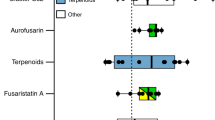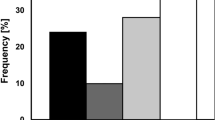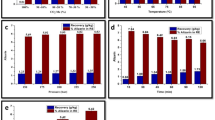Abstract
CHEMICALS which inhibit oxidative phosphorylation are usually toxic to keratin-digesting insect larvae (Table 1), and early investigations on the mothproofing of wool involved the use of this type of compound1. With salicylic acid and simple derivatives, however, large concentrations are required for protection from insect attack (Table 2) and those which are effective have been found to have poor fastness to laundering. Attempts to produce more satisfactory mothproofing agents have concentrated on chlorinated organic compounds, and those which are used industrially at present are all of this nature2.
This is a preview of subscription content, access via your institution
Access options
Similar content being viewed by others
References
Roark, R. C., An Index of Patented Mothproofing Materials, U.S. Department of Agriculture, Bureau of Chemistry and Soils, Insecticide Division (1931).
Wool Sci. Rev., 1 (August, 1965).
Taborsky, R. G., Grant, D. D., and Kaye, S., J. Amer. Pharm. Assoc., 48, 503 (1959).
Stecker, H., U.S. Patent 2,906,711.
A.A.T.C.C. Technical Manual, Part II, B-146.
Author information
Authors and Affiliations
Rights and permissions
About this article
Cite this article
MCPHEE, J. Use of Salicylic Acid and Derivatives for the Protection of Wool from Insect Attack. Nature 212, 395–396 (1966). https://doi.org/10.1038/212395a0
Issue Date:
DOI: https://doi.org/10.1038/212395a0
Comments
By submitting a comment you agree to abide by our Terms and Community Guidelines. If you find something abusive or that does not comply with our terms or guidelines please flag it as inappropriate.



